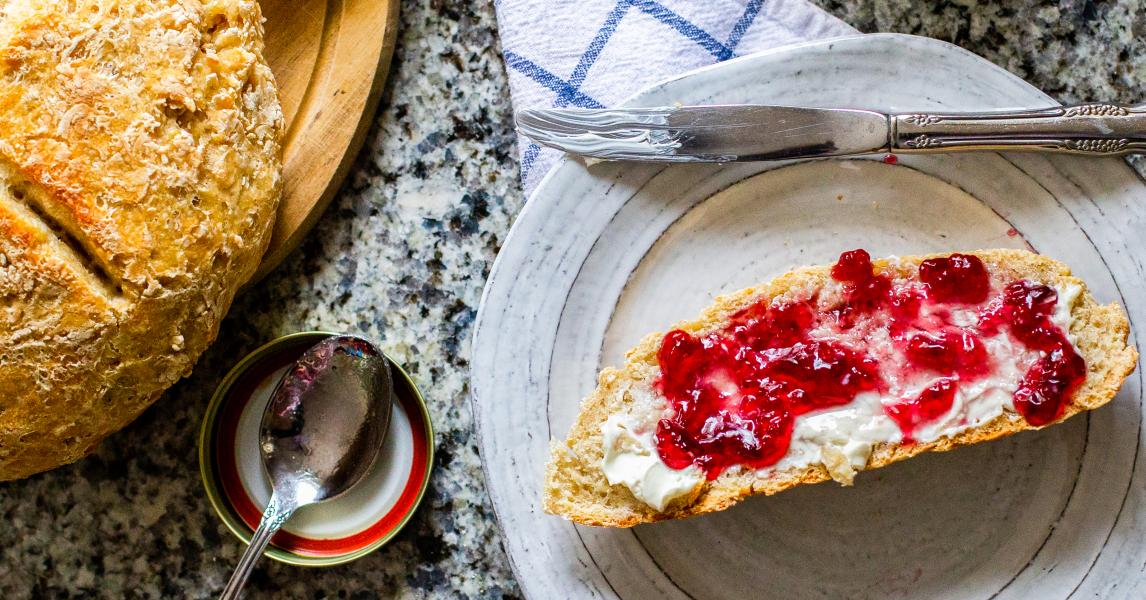- by Jim Lahey
We’ve long been a fan of Jim Lahey, founder of Sullivan Street Bakery in New York City. When he published his now-famous recipe for no-knead bread in a pot, he transformed the way home cooks all across the country think about baking. With just a cast iron Dutch oven, some flour, yeast, water, and salt, even the most novice baker can make bakery-quality bread right at home.
Directions
- In a medium bowl, stir together the flour, salt, and yeast. Add the water. Use a wooden spoon or your hand to mix until you have a wet, sticky dough—about 30 seconds. Make sure it’s really sticky to the touch; if it’s not, mix in another 1-2 tablespoons of water. Cover the bowl and let set at room temperature, out of direct sunlight, until the surface is dotted with bubbles and the dough is more than doubled in size (about 12-18 hours).
- When the first fermentation is complete, generously dust a work surface with flour. Use a rubber spatula to scrape the dough onto the surface in one piece. When you begin to pull the dough away from the bowl, it will cling in long, thin strands (this is the developed gluten), and it will be quite loose and sticky—do not add more flour. Use lightly floured hands or a bowl scraper or spatula to lift the edges of the dough in toward the center. Nudge and tuck in the edges of the dough to make it round.
- Place a cotton or linen tea towel (not terry cloth, which tends to stick and may leave lint in the dough) or a large cloth napkin on your work surface and generously dust the cloth with wheat bran, cornmeal, or flour. Use your hands, a bowl scraper, or wooden spatula to gently lift the dough onto the towel so it is seam-side down. If the dough is tacky, dust the top lightly with wheat bran, cornmeal, or flour. Fold the ends of the towel loosely over the dough to cover it and place it in a warm, draft-free spot to rise for 1-2 hours. The dough is ready with it is almost doubled. If you gently poke it with your finger, making an indentation about ¼-inch deep, it should hold the impression. If it doesn’t, let it rise another 15 minutes.
- Preheat the oven to 475 degrees F 30 minutes before the end of the second rise, with a rack in the lower third position, and place a cast iron dutch oven in the center of the rack.
- Using pot holders, carefully remove the preheated pot from the oven and uncover it. Unfold the tea towel, lightly dust the dough with flour or bran, lift up the dough, either on the towel or in your hand, and quickly and gently invert it into the pot, seam side up. (Use caution—the pot will be very hot). Cover the pot and bake for 30 minutes.
- Remove the lid and continue baking until the bread is a deep chestnut color, 15-30 minutes more. Use a heatproof spatula or pot holders to carefully lift the bread out of the pot and place it on a rack to cool thoroughly. Wait until it cools to slice or tear into it, about an hour.


Share: